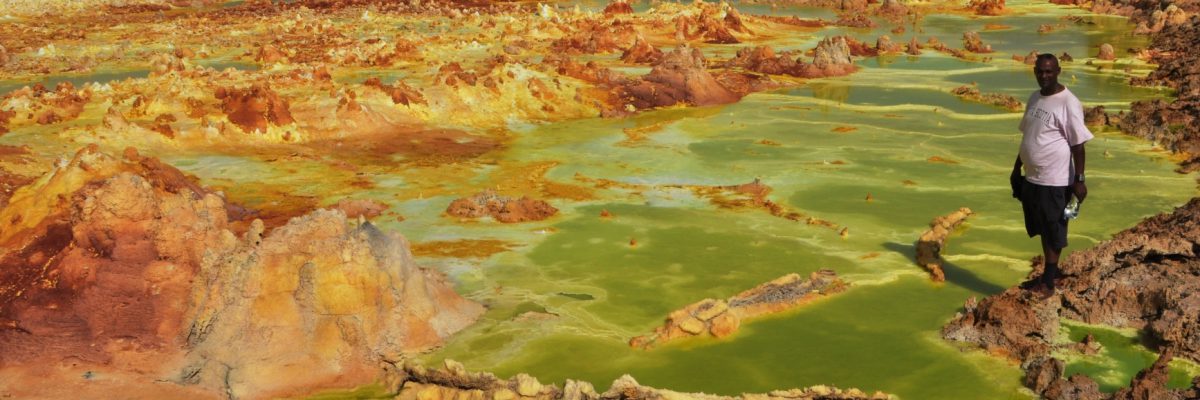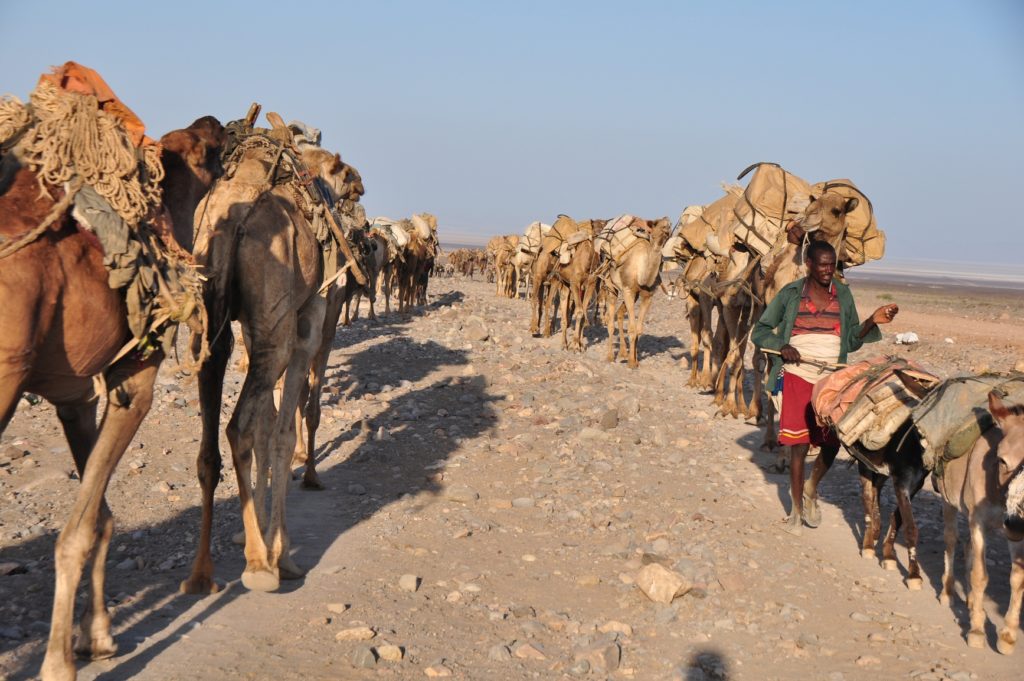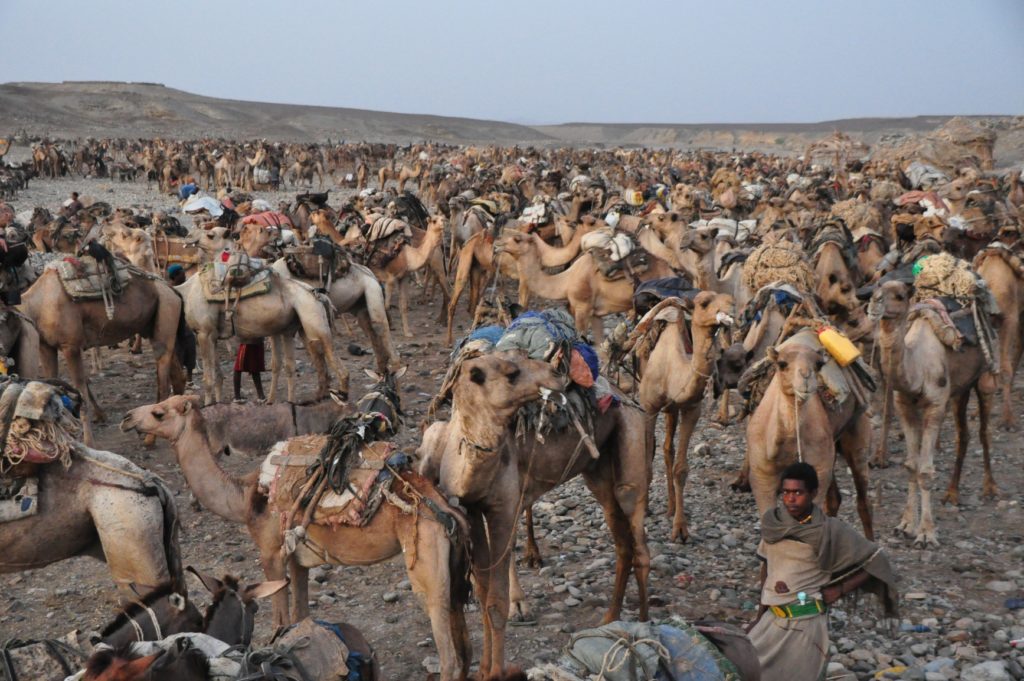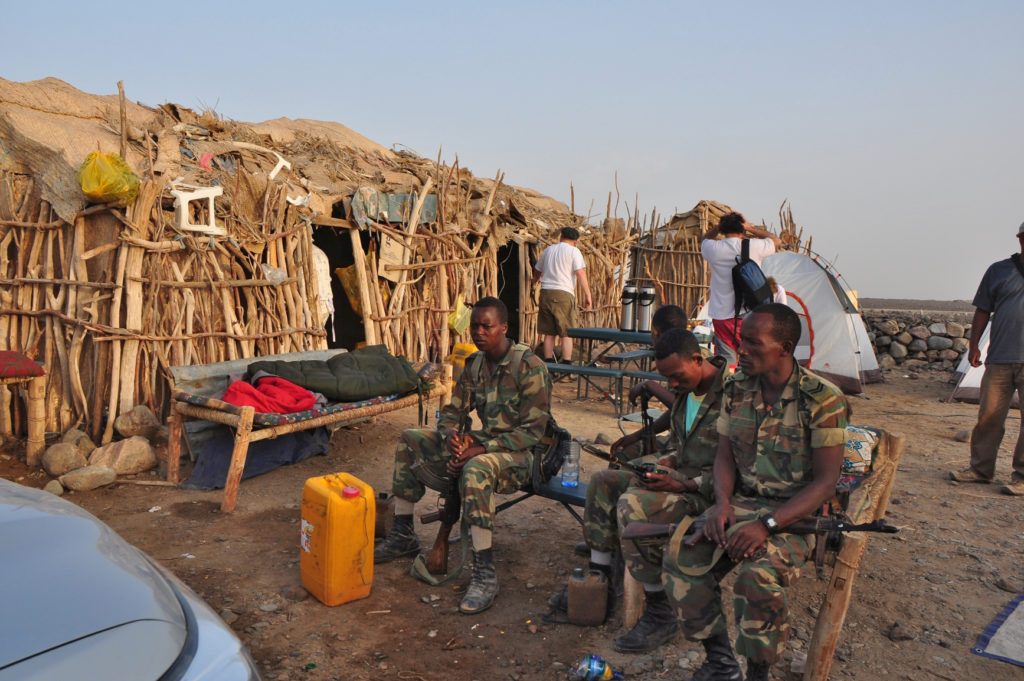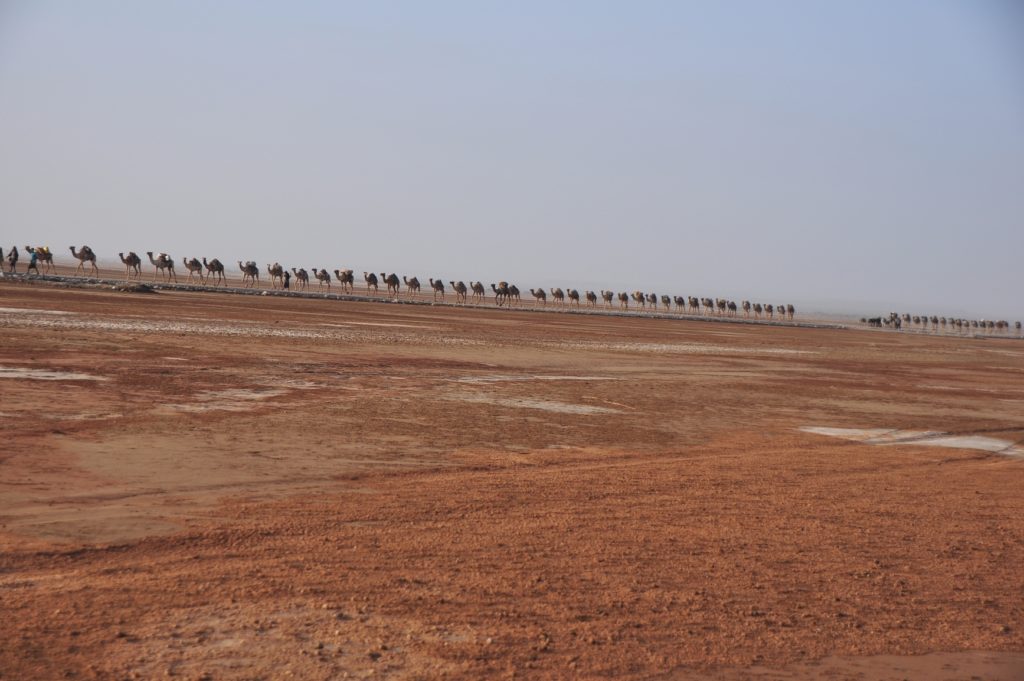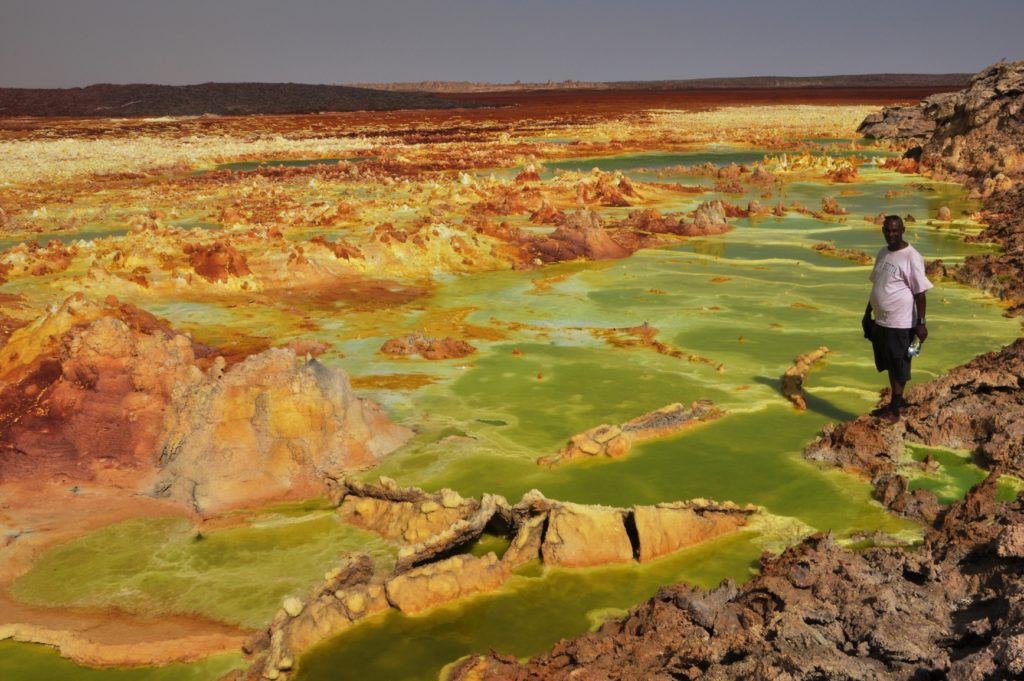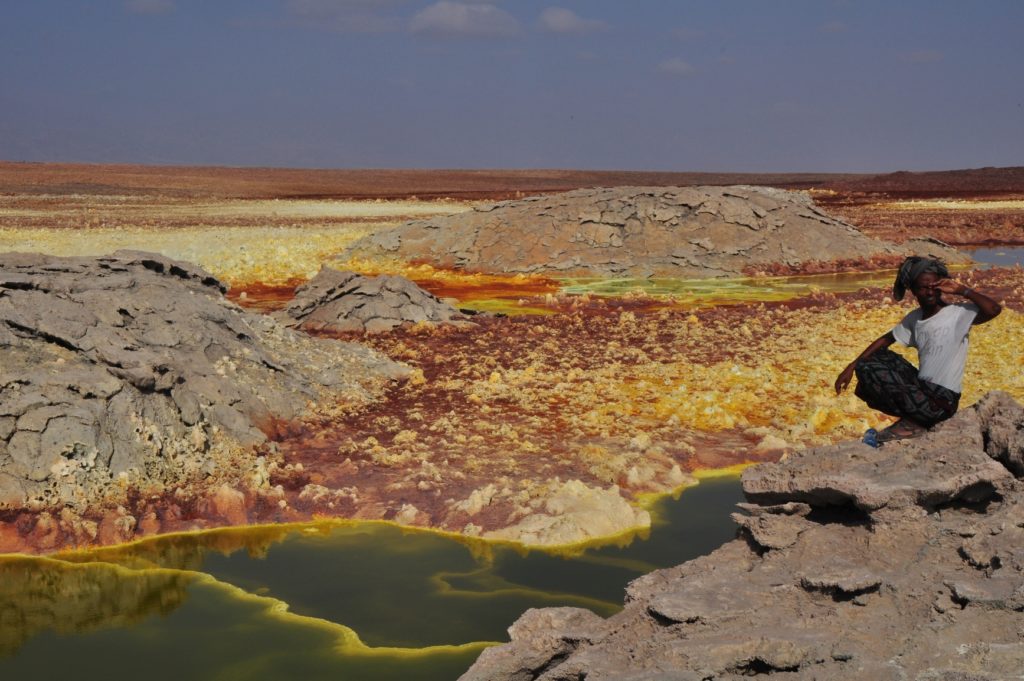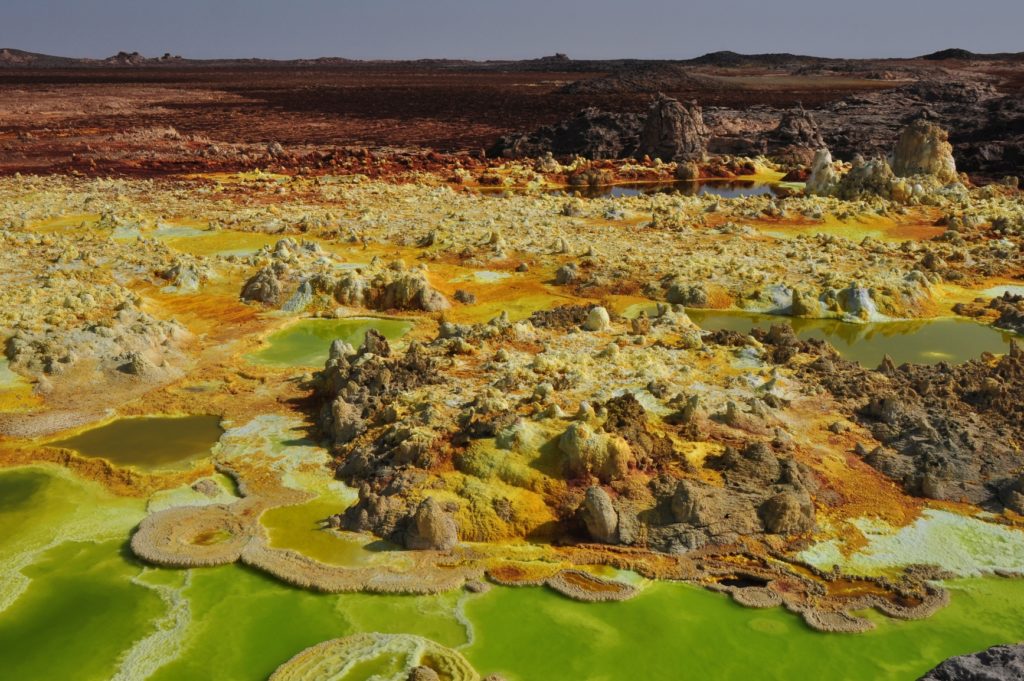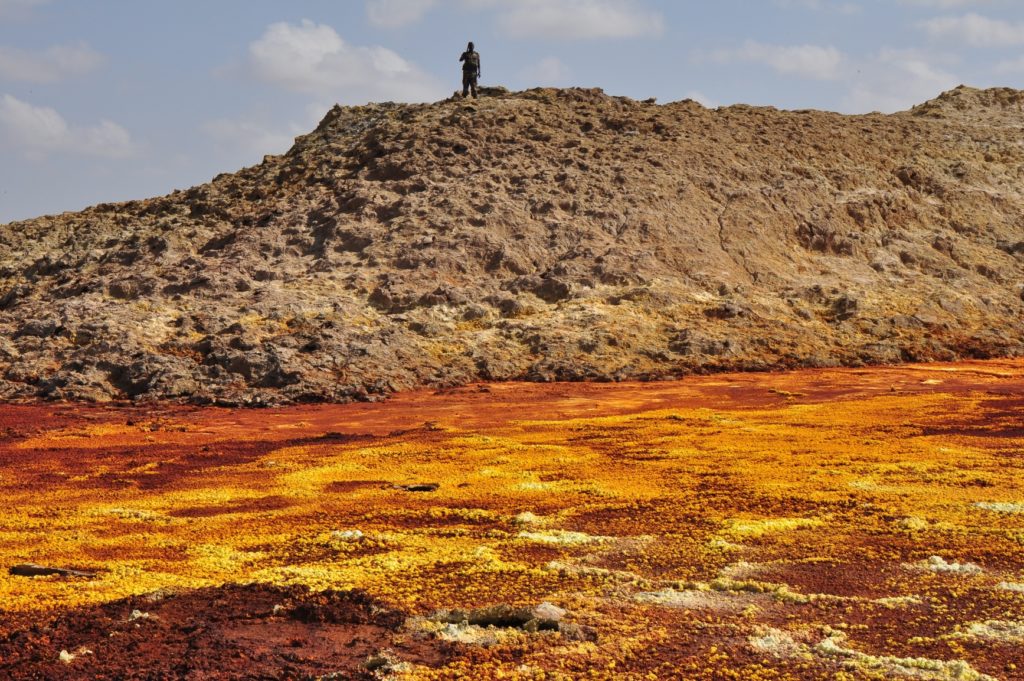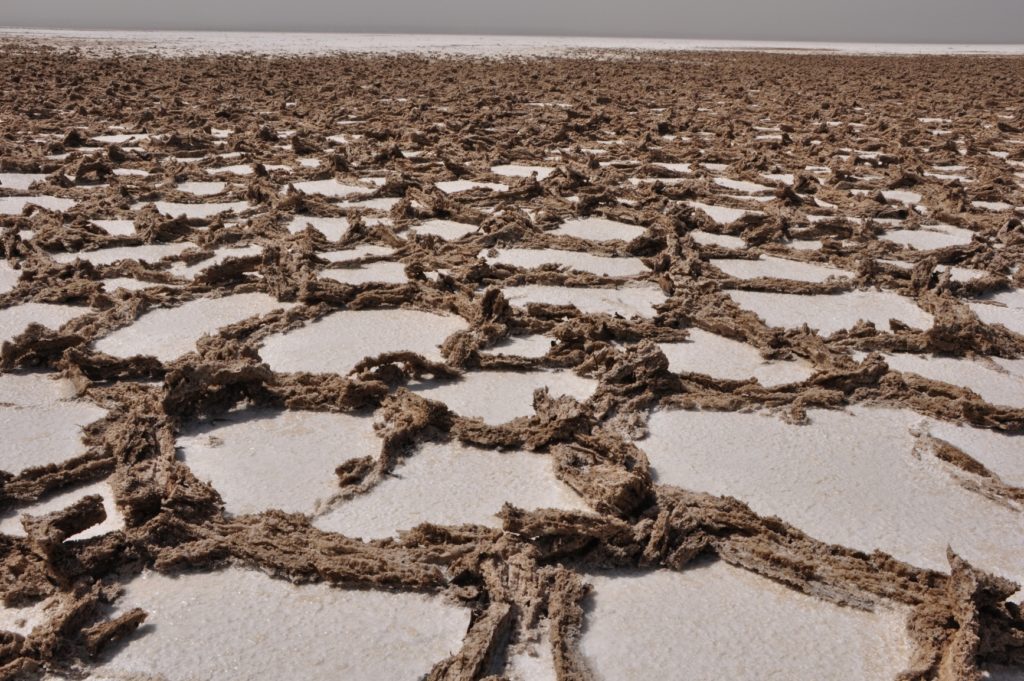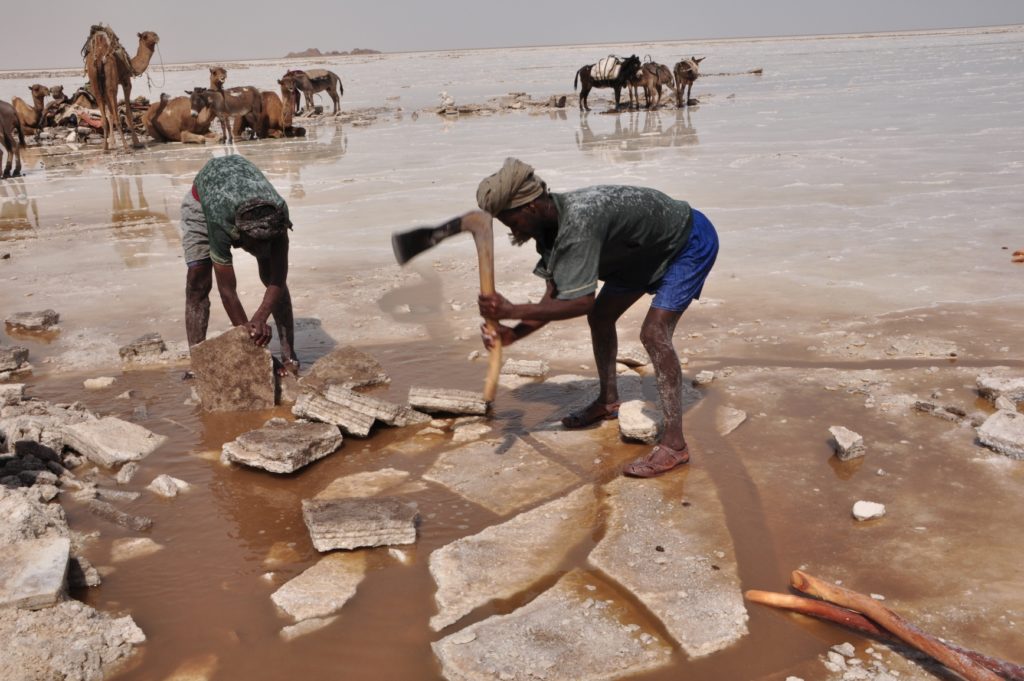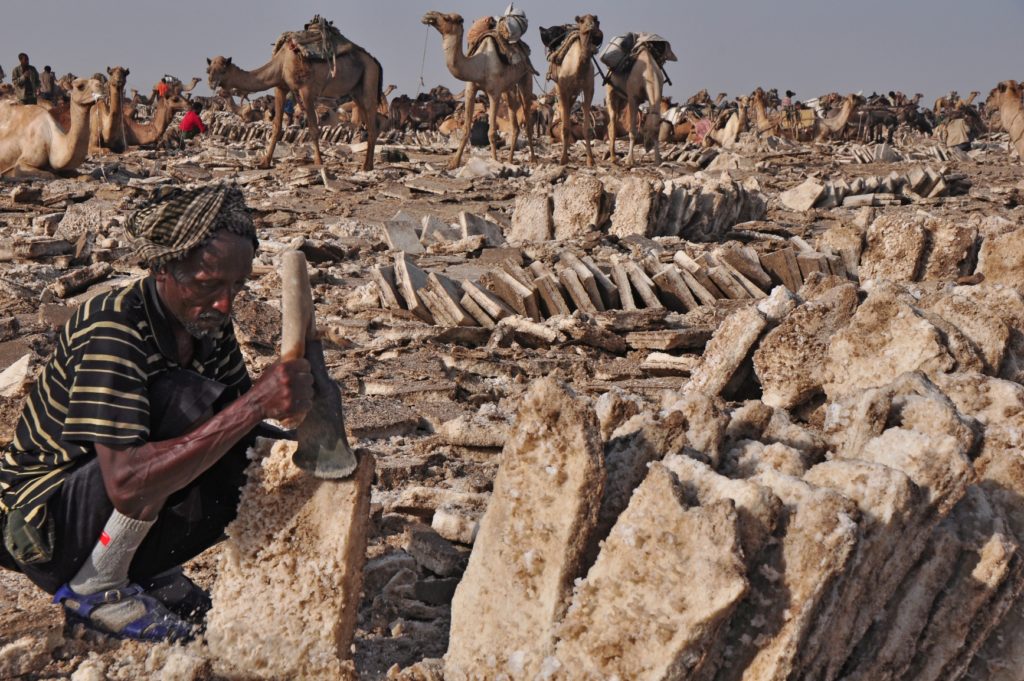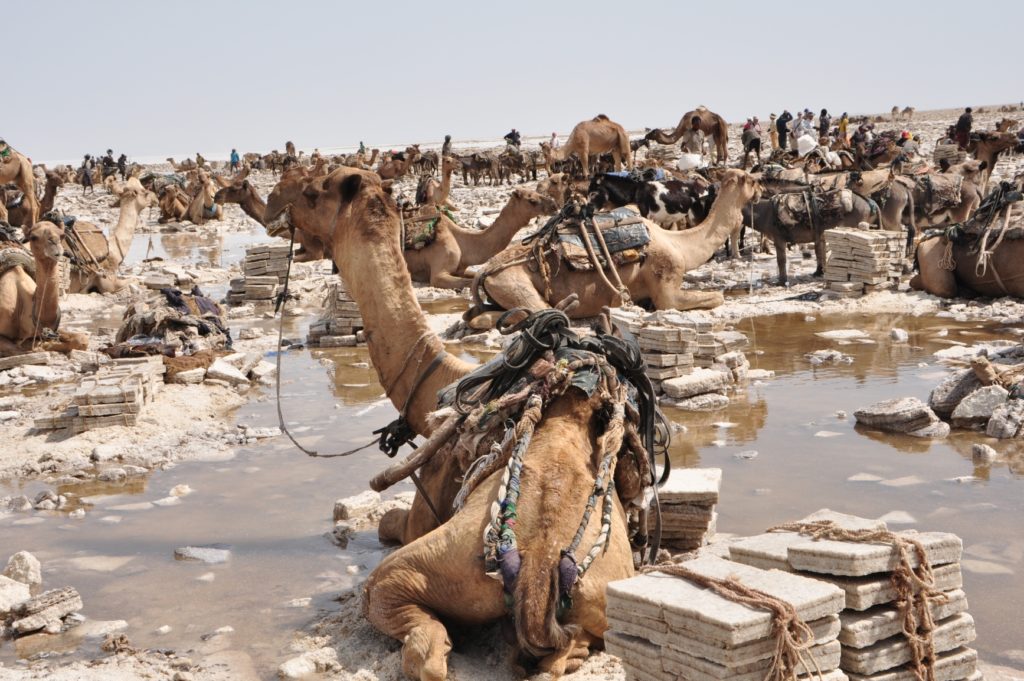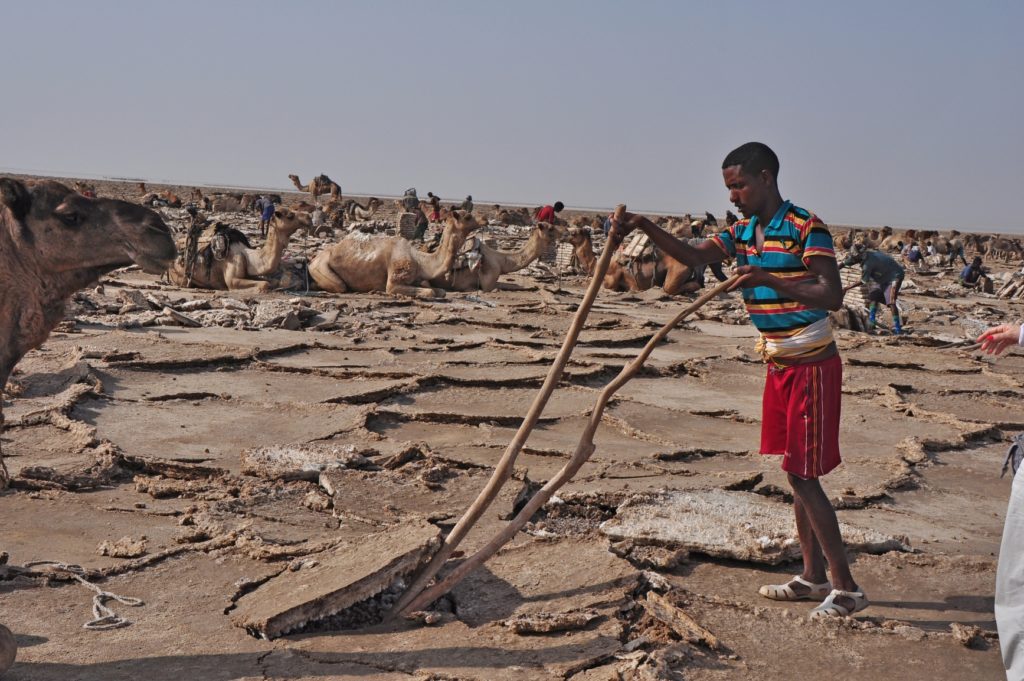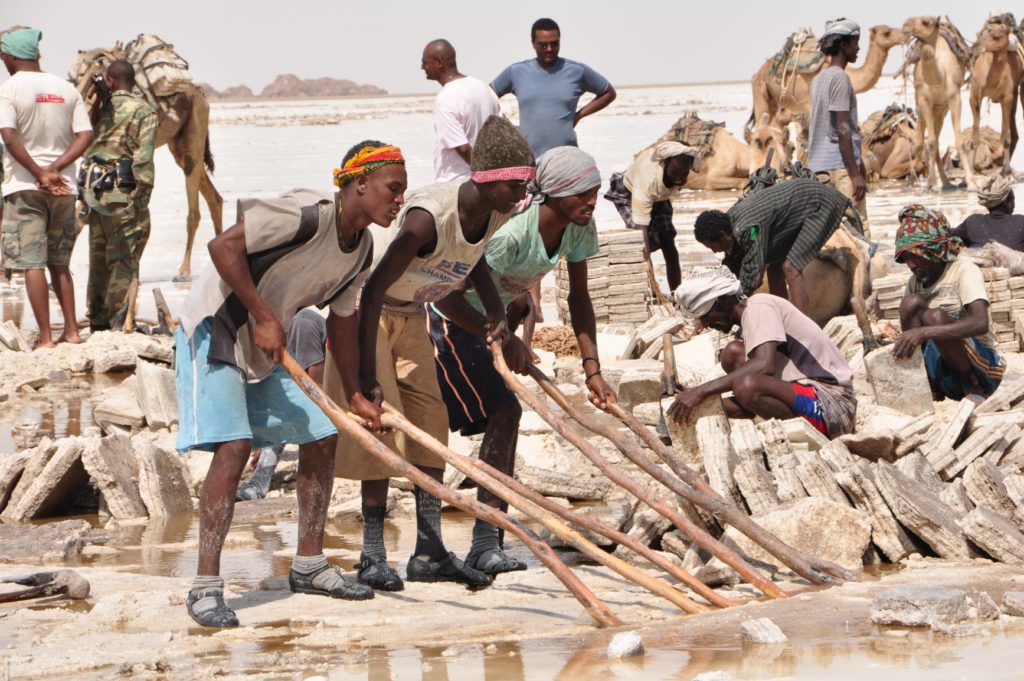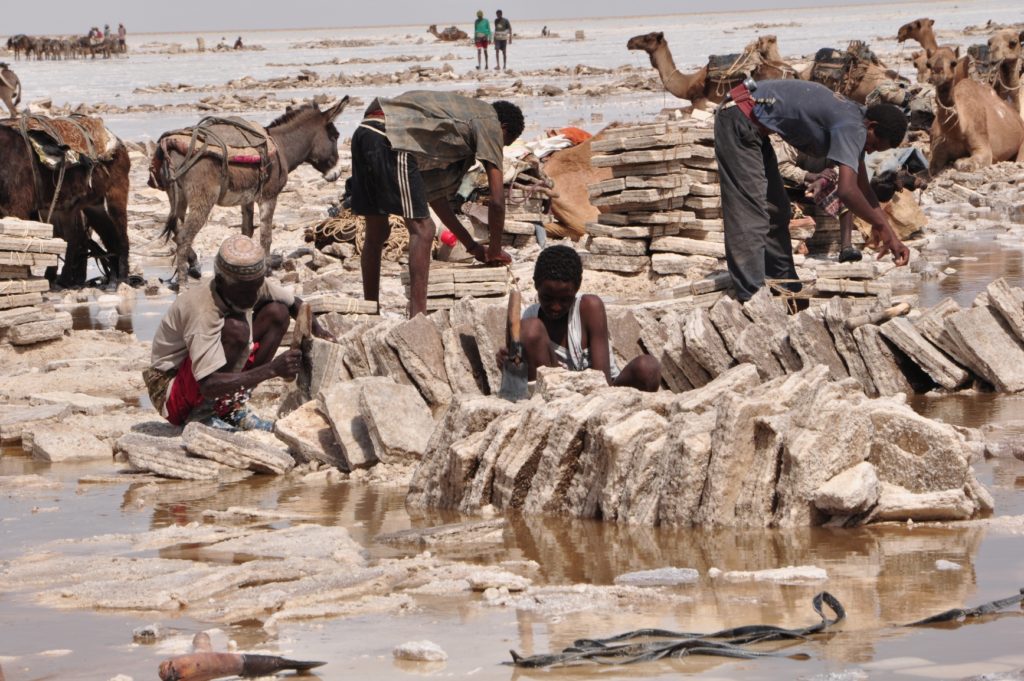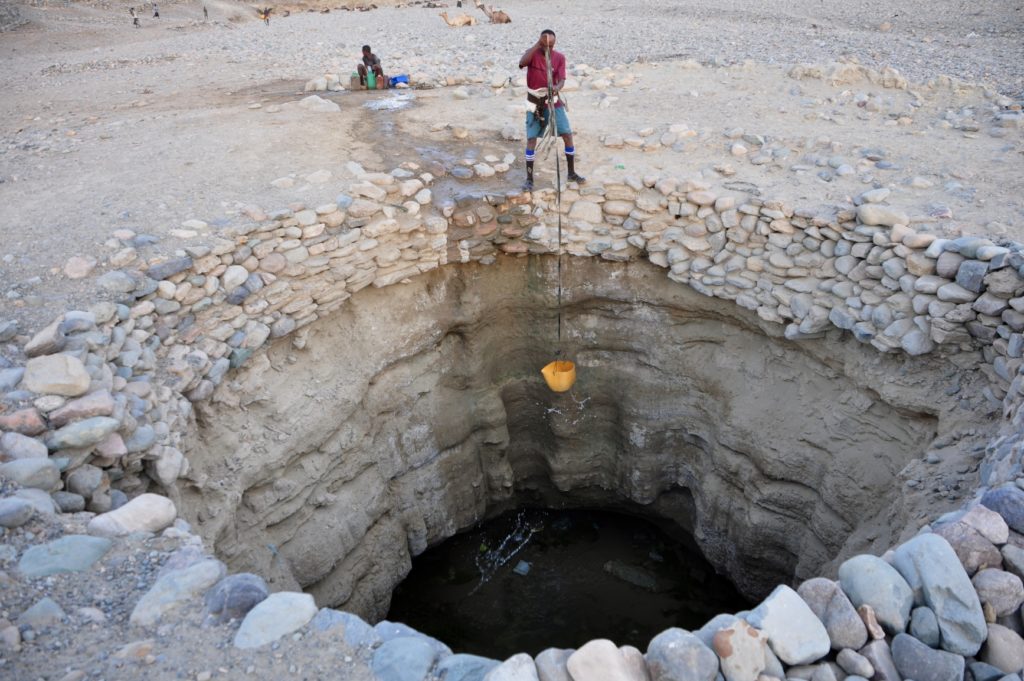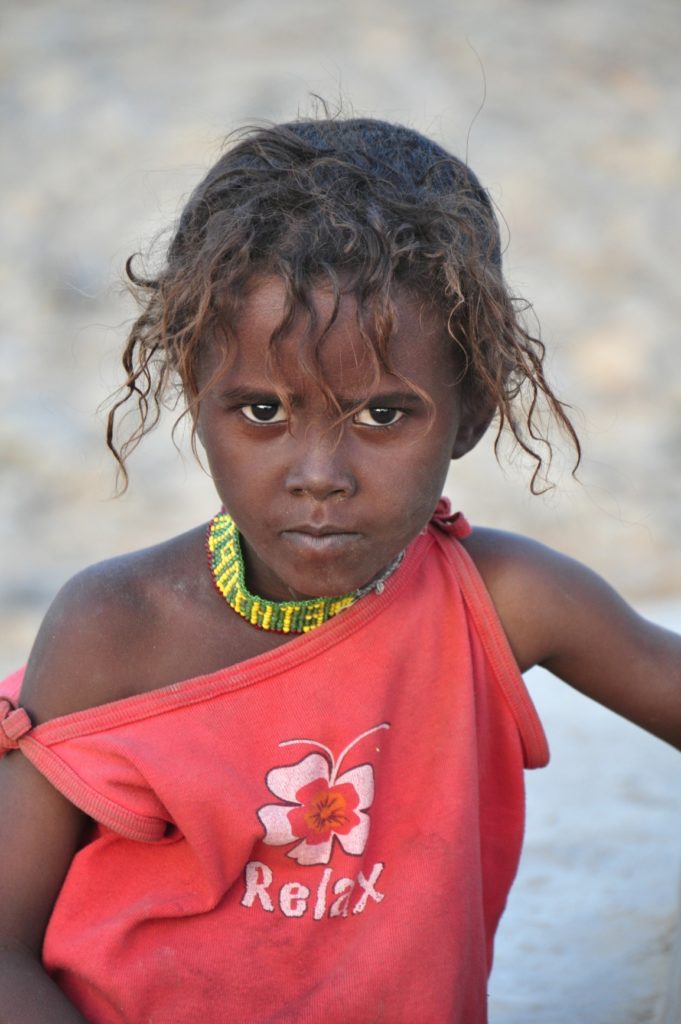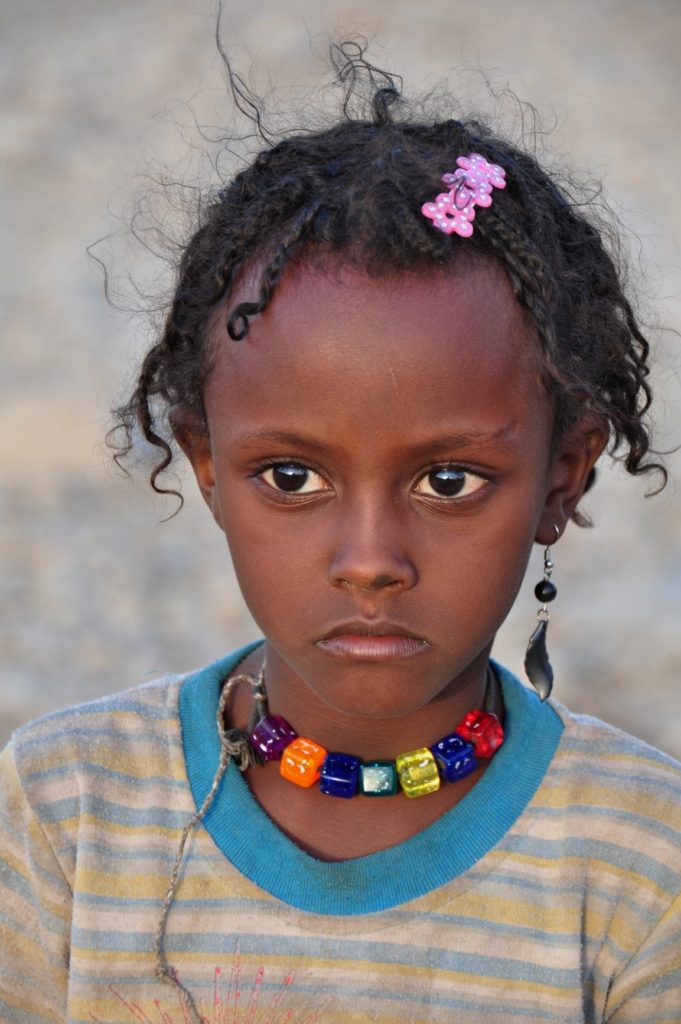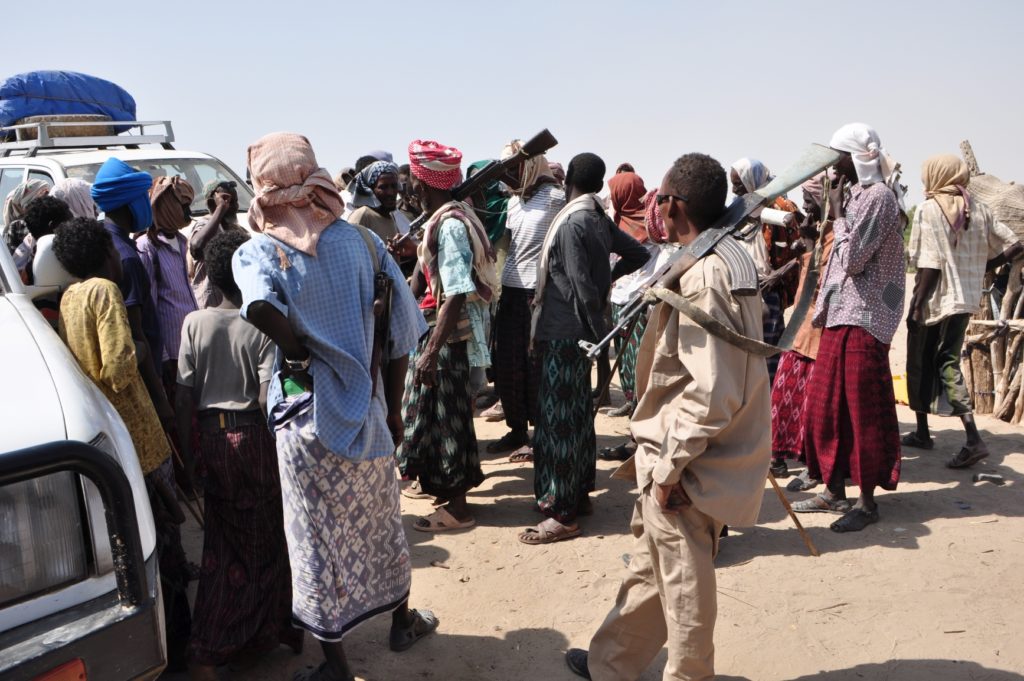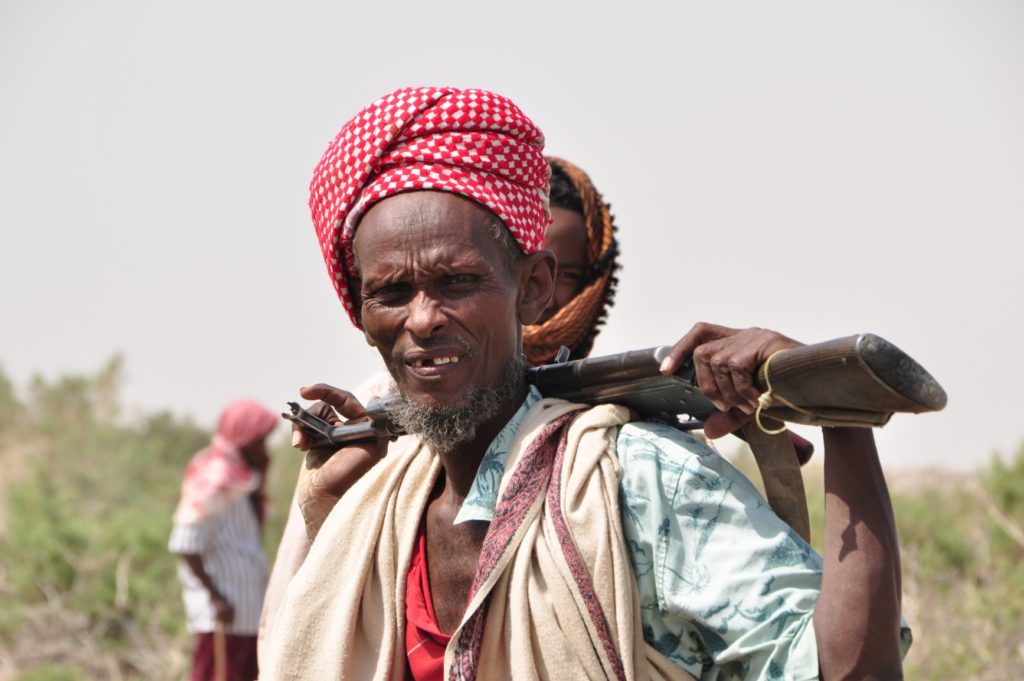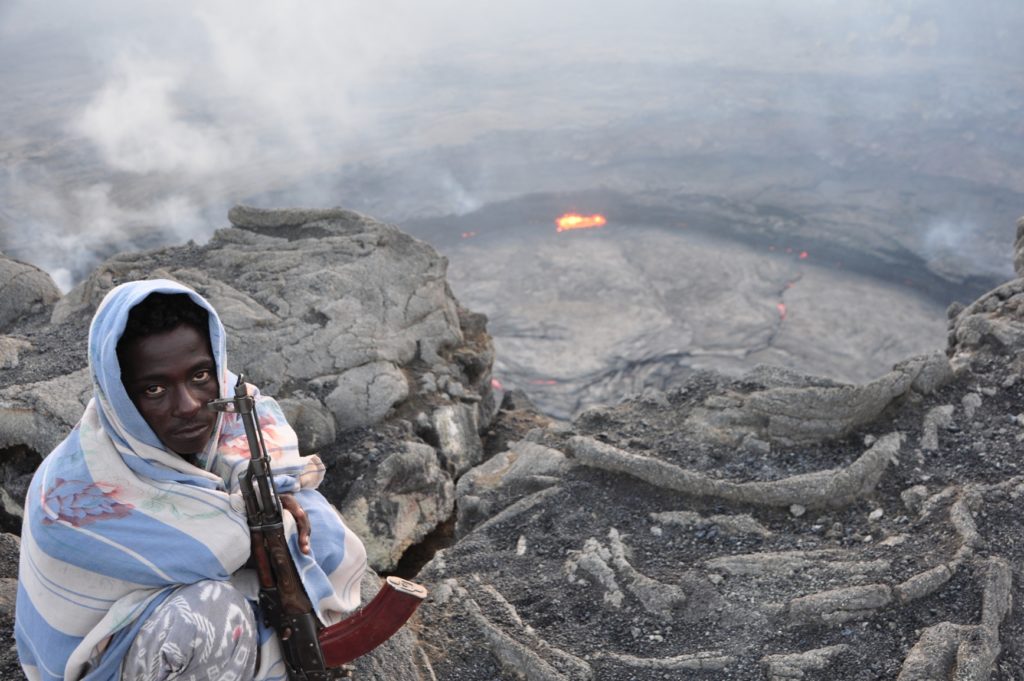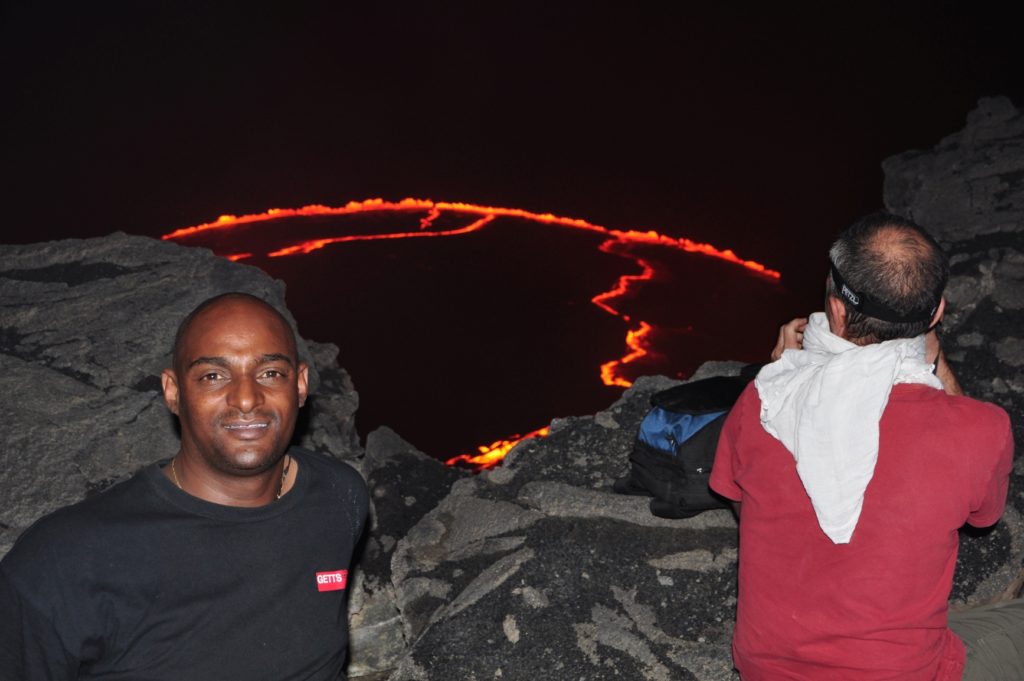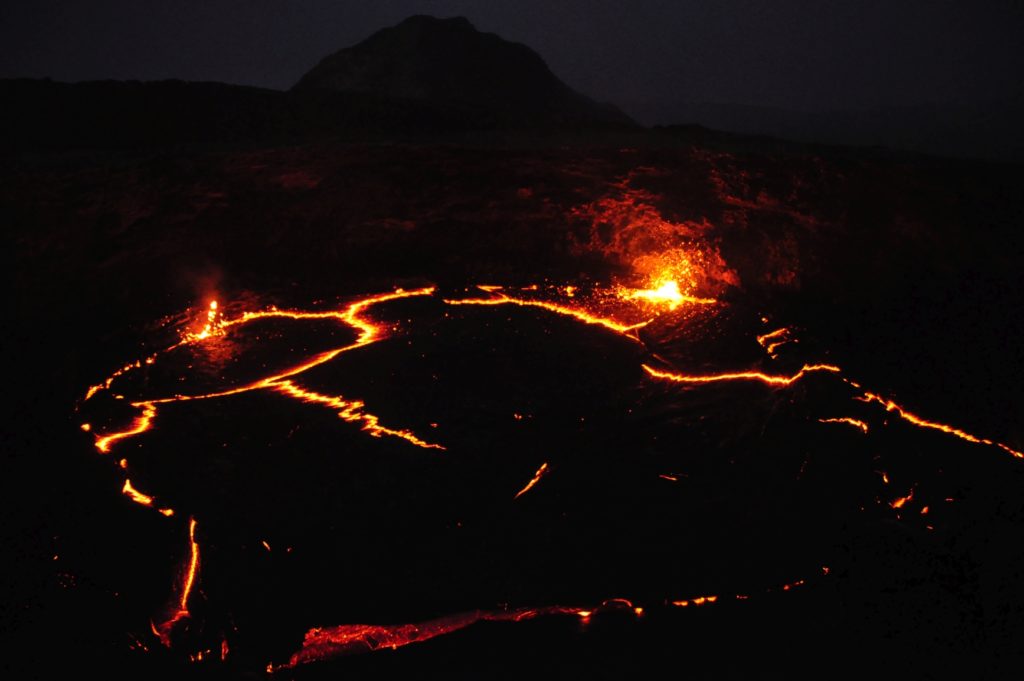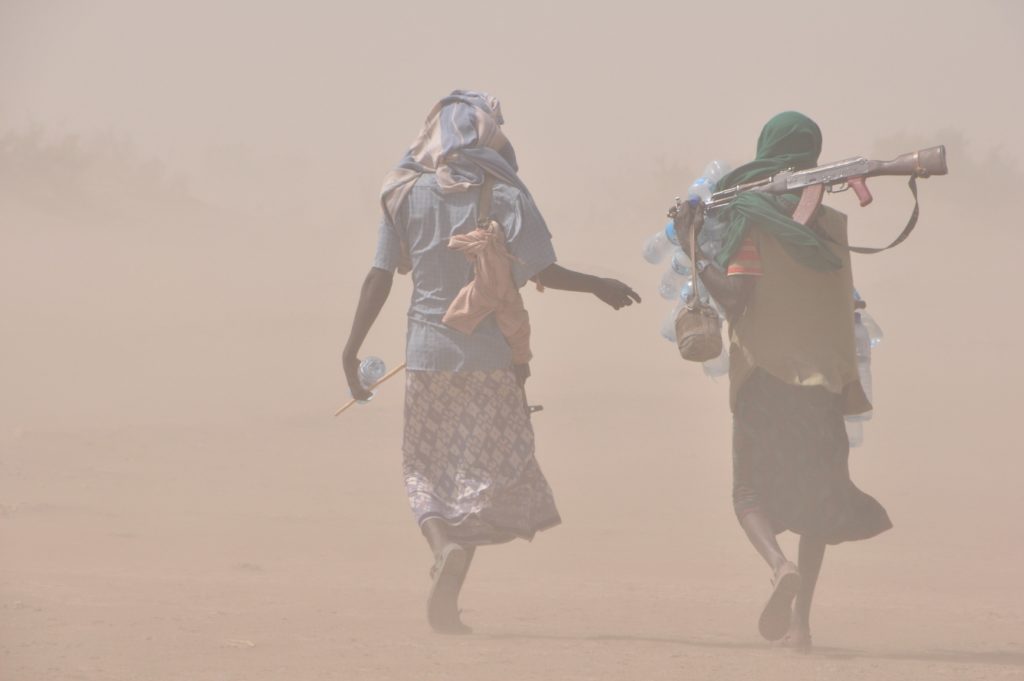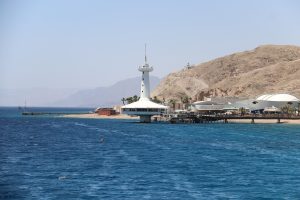The Danakil desert in northeastern Ethiopia is one of the world’s harshest deserts. In the summer months, the temperature can reach 60 degrees Celsius (140 degrees Fahrenheit) and sandstorms are daily occurrences.
The desert lies across two countries, part of it are in Ethiopia and part in Eritrea. Today, peaceful relations exist between these countries but that is after long periods of tension. In order to enter the area, special permissions must be granted. The Afar tribe is the local tribe, which rules the desert and armed escorts from the tribe must be retained in order to travel in the area. The escorts serve as guards and as local guides. Additionally, in some areas armed soldiers also accompany travel mainly due to tourist kidnapping incidents that happened in the last few years. During our travel, there was a point where we were 5 travelers accompanied by 10 staff members.
The desert travelling conditions may be harsh yet the sights are spectacular. The Camel and donkey caravans, numbering hundreds of animals, cross the desert carrying their loads from the salt mines to the outside world. Along the way, a network of active volcanoes exist. These mountains can only be climbed at night (due to the heat of the day) and it takes several hours to reach the summit. The summit feels like a doorway to hell with its bursting lava, its erupting sounds and the sulfuric smell so indicative of volcanoes.
The Dalol area feels like a dry and colorful aquarium. The area still experiences volcanic activity that emits erupting minerals to the surface and creates a variety of colorful shapes in the rock, even the camera cannot do it justice.
In general, it feeling as if you are traveling in another world where time has stood. Yet the area is undergoing road paving and with these roads becoming more accessible. These roads threaten another hidden gem that will most likely disappear with time.
Today, I suppose most of the dirt roads that I witnessed have been paved. Chinese companies are working at full swing to pave the area. Only Afar tribe oppose these roads mostly because their hard-earned livelihood will be taken away. Once roads are paved trucks will replace camels. One truck can hold salt currently carried by tens of camels and of course the truck travels at much larger speeds.
After landing in Mekele, we immediately entered the Danakil desert. The endless camel convoys.
The caravans include mules and camels. They travel from the mines with a heavy load and then make the return trip without one.
The Hamed Ela village served as a resting spot during our travels in the Danakil desert. Most caravans stop here to rest and refuel on their way to or from the salt mines.
Recently, accommodations in the area may have been improved since my visit a few years ago. Yet with changing conditions some of the peace and magic of the place has also disappeared.
Armed soldiers accompany our journey:
The one way trip takes three days to traverse. The pay is lousy and walking in cheap plastic shoes as the locals do is not easy. Thousands of camels on their way to the salt mines.
The salt slabs are cut and stacked in piles and loaded on the livestock making their way to the market 150 KMs from there. The local workers will walk alongside their camels on the 3-4 day trip either barefoot or with plastic shoes.
Dalol is an active volcanic area: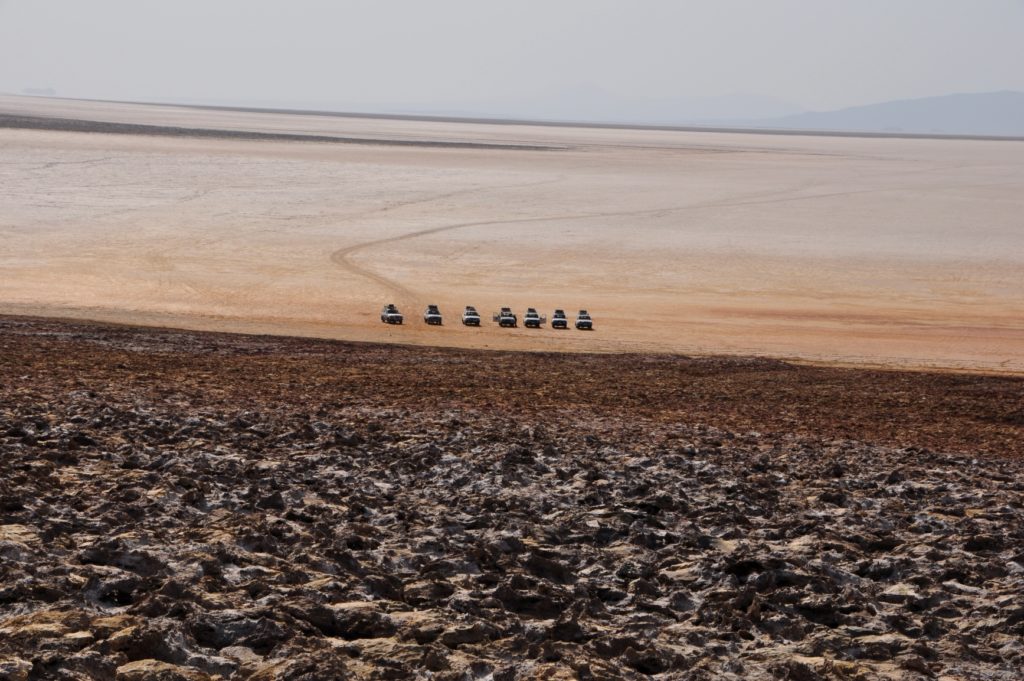
We hope that our local guide truly knows where it is safe to step as the water is acidic and boiling at spots. If foot paths would be paved in the future, these sights could be accessible.
These images were not Photoshopped, their beauty is real:
On our way to the mines we pass lake Asale where the heat and salt has evaporated most of the water of the lake.
The armed guards man positions whenever a path must be passed on the way to the mines.
Once we reach the salt bearing areas, the specific location is selected according to the thickness of the salt slabs.
Mining salt from the bottom of the lake
We again stop at the Hamed-Ela village on our return trip. From there we continue to the Erta Ale volcano:
and guides must be retained from the local Afar tribe. This tribe is known for its hostility to tourists yet a different story unfolds once you are under their supervision.
our escorting guards on the way to the volcano.
As we near the Erta Ale volcano, the paths is filled with obsidian and is nearly impassable.
We stop at a nearby village. We will leave for our volcano climb in the early evening hours. We will climb during the nights when temperatures allow the 4 hour climb to the 620 Meter summit. An accompanying camel will carry the night gear and water for the climbing party.
As if peering into the gates of hell, lava erupts, each time in a different spot throwing volcanic rock into molten magma. The air is full of volcanic vapors and yet we want to stay in this spot.
We descend from the mountain with the first light of the day. Our escorts bid farewell and make their way home through a sandstorm.
All photos by Beni Nissim.

